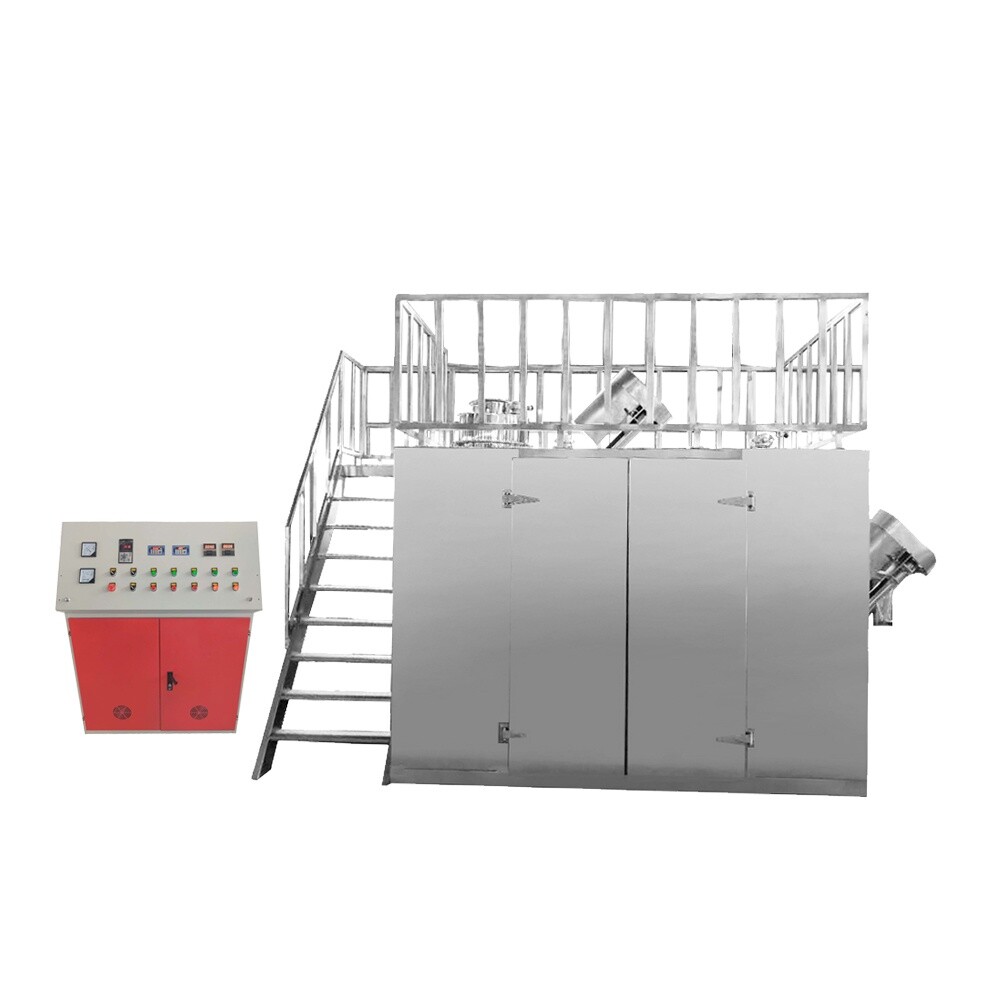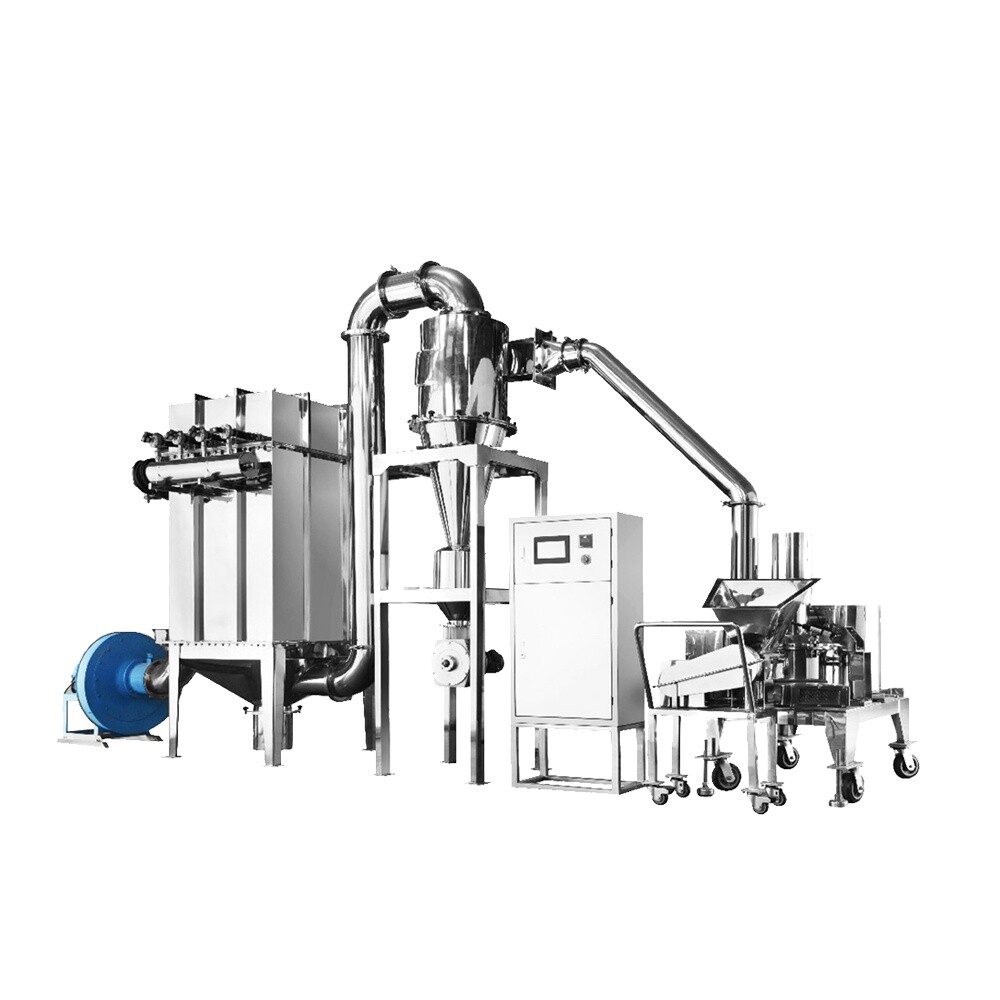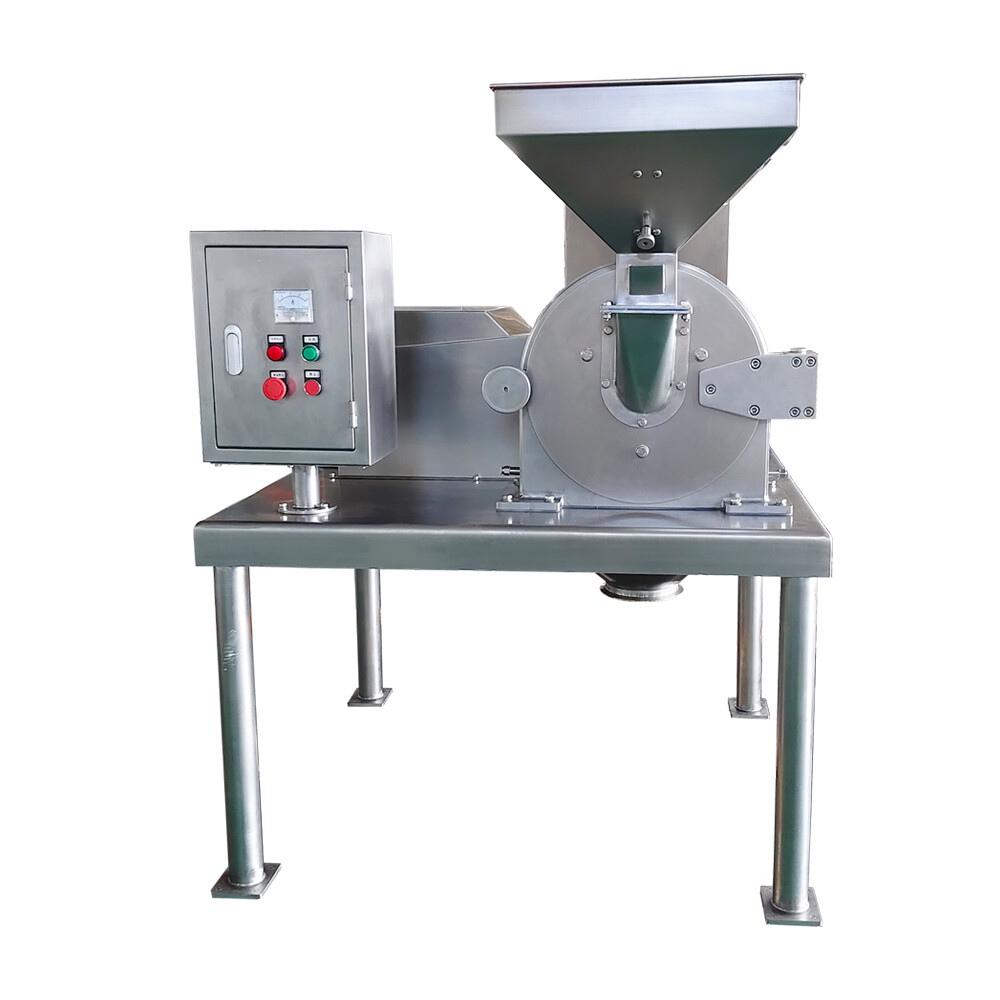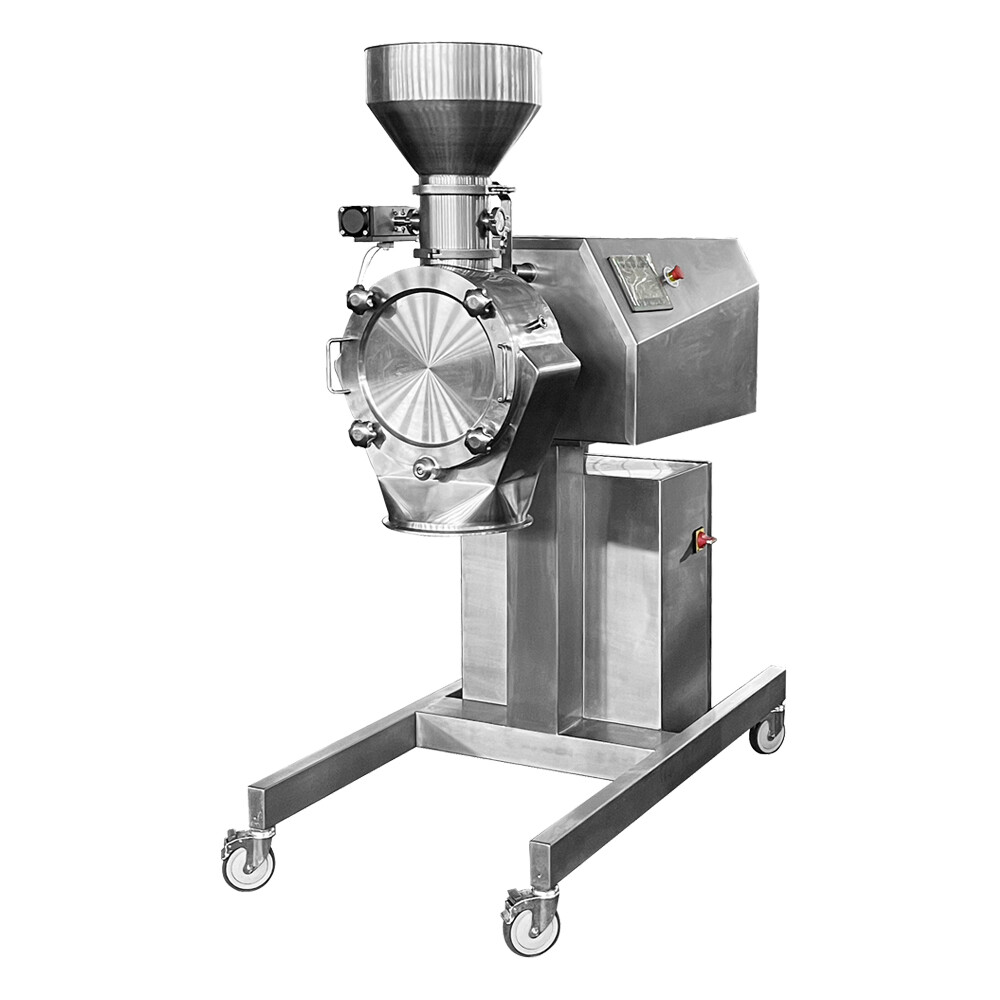
A cryogenic grinder is also known as: cryogenic pulverizer, cryogenic milling machine, cryogenic grinding equipment, cryo pulverizer.
Product Introduction
Liquid Nitrogen Cryogenic Grinder Machine
cryogenic mill that uses liquid nitrogen's ultra-low temperature (-196°C) to rapidly embrittle materials, then combines mechanical grinding for material refinement. Its core advantage is solving processing issues of materials hard to grind or prone to deformation at room temperature. Main applications by industry and material properties are as follows:
1. Food & Health Product Industry: Preserve Nutrition & Flavor
For food raw materials prone to oxidation, oil seepage, caking or flavor loss during room-temperature grinding, enabling efficient grinding while retaining core value.
·Nuts/seeds: Walnuts, almonds, sesame , flaxseeds, etc. Room-temperature grinding causes oil seepage to stick to equipment; freezing embrittles materials for grinding into fine powder (e.g., sesame/flaxseed powder) and prevents oil oxidation.
·Spices: Herbs, pepper, cumin, coriander seed, chili, cinnamon, turmeric, ginger, garlic, etc. Freezing locks in volatile aromatic compounds that are easily lost during room-temperature grinding, ensuring the spice's original fragrance is retained; it also prevents caking or clumping, enabling grinding into evenly sized particles for consistent flavor release in cooking.
·Functional ingredients: Ganoderma lucidum, ginseng, cordyceps, sea cucumbers, etc. Ultra-low temperature maximizes retention of heat-sensitive nutrients (e.g., polysaccharides, saponins), avoiding active ingredient loss from high-temperature grinding (used in high-end health product powders).
·Special foods: Chocolate, cheese, frozen fruits (strawberries, blueberries). Freezing increases hardness and prevents melting, enabling grinding into uniform particles/powder (for baking ingredients, meal replacements).
2. Pharmaceutical & Biotechnology Industry: Protect Activity & Meet Compliance
For temperature-sensitive pharmaceutical raw materials/biological tissues requiring no contamination or activity damage, meeting pharmaceutical-grade standards.
·TCM raw materials: TCM herbs (notoginseng, angelica, salvia miltiorrhiza), TCM extracts. Room-temperature grinding damages active ingredients (e.g., volatile oils, alkaloids) via frictional heat; cryogenic grinding retains efficacy and achieves micron-level fineness (aids absorption of TCM powders/capsules).
·Biological samples/preparations: Animal organs (liver, pancreas), microbial cells, vaccine excipients. Ultra-low temperature inhibits denaturation of bioactive substances (e.g., enzymes, proteins) and prevents microbial contamination (used in pre-treatment for biopharmaceutical active ingredient extraction).
·Western medicine excipients: Polymer excipients (e.g., polylactic acid, hypromellose). Prone to softening at room temperature; freezing enables grinding into uniform particles to ensure preparation stability.
3. Chemical & New Material Industry: Grind Hard-to-crush Materials & Control Particle Size
For high-toughness, elastic or decomposable chemicals/new materials at room temperature, enabling refined, controllable grinding.
·Polymer materials: Rubber, plastics (PE, PVC), resins, fibers (carbon/glass fibers). Tough and stretchable at room temperature; freezing embrittles for grinding into fine powder (for recycled materials, composite filling like plastic modification).
·Heat-sensitive chemicals: Dyes, pigments, catalysts. Room-temperature grinding causes decomposition, discoloration or toxic volatiles; ultra-low temperature inhibits reactions (for high-end coatings, inks, catalytic materials).
·Special powders: Metal powders (aluminum, copper), ceramic powders. Cryogenic grinding reduces metal oxidation and controls uniform particle size (for 3D printing, precision ceramic components).
4. Environmental Protection & Resource Recycling Industry: Process Hard-to-degrade, High-hardness Waste
For waste recycling, especially tough/high-hardness waste hard to crush at room temperature.
·Waste rubber/plastic recycling: Waste tires, plastic films, foam plastics. Freezing embrittles for efficient grinding into fine particles (e.g., rubber powder, recycled plastic) (for pavement materials, reducing recycling difficulty).
·Hazardous waste treatment: Waste battery casings, toxic plastic parts. Ultra-low temperature grinding prevents leakage of harmful substances (e.g., heavy metals, toxic gases) (facilitates subsequent recycling or harmless treatment).
5. Other Special Fields: Meet Customized Grinding Needs
·Cosmetic raw materials: Natural plant extracts (rose, aloe), mineral powders (talc, mica). Cryogenic grinding retains plant activity and prevents mineral discoloration (ensures cosmetic safety/efficacy).
·Scientific research: Biological tissue sections, new material samples. Ultra-low temperature avoids structural damage during grinding (provides accurate samples for composition analysis/performance testing).
Grinding Principle
This cryo pulverizer uses liquid nitrogen as cold source: 1) Cool materials to low temperature for embrittlement; 2) Embrittled materials enter the grinder chamber, achieving grinding via high-speed impeller-driven impact, collision, shearing and friction between materials; 3) Classify ground materials: qualified particles collected by cyclone separator, while cold air is partially recycled to the hopper to improve cold energy utilization.
Structural Composition
1. Pre-cooling hopper: Uses liquid gas vaporization for forced material pre-cooling.
2. Screw feeder: Conveys embrittled materials to the grinding chamber (smooth welds for easy cleaning, quick-connect joints, sectional quick-assembly long screw, flap valve at pipeline bottom).
3. Liquid nitrogen injection: Adjusted by quick-install SUS304 low-temperature valves (well-known brands); minimum temperature of pre-cooling hopper and main machine: -196°C.
4. Classification: High-pressure airflow from grinding and refrigerant expansion airflow discharged via static classifier's spiral window; qualified materials enter discharge system with airflow, while coarse materials bounce back to the chamber after hitting classifier blades.
Technical Parameters
Get a Free Quote

 Advanced technology provides one-stop service for your enterprise
Advanced technology provides one-stop service for your enterprise
 24/7 before-sales and after-sales services
24/7 before-sales and after-sales services
 Comprehensive technical support
Comprehensive technical support



